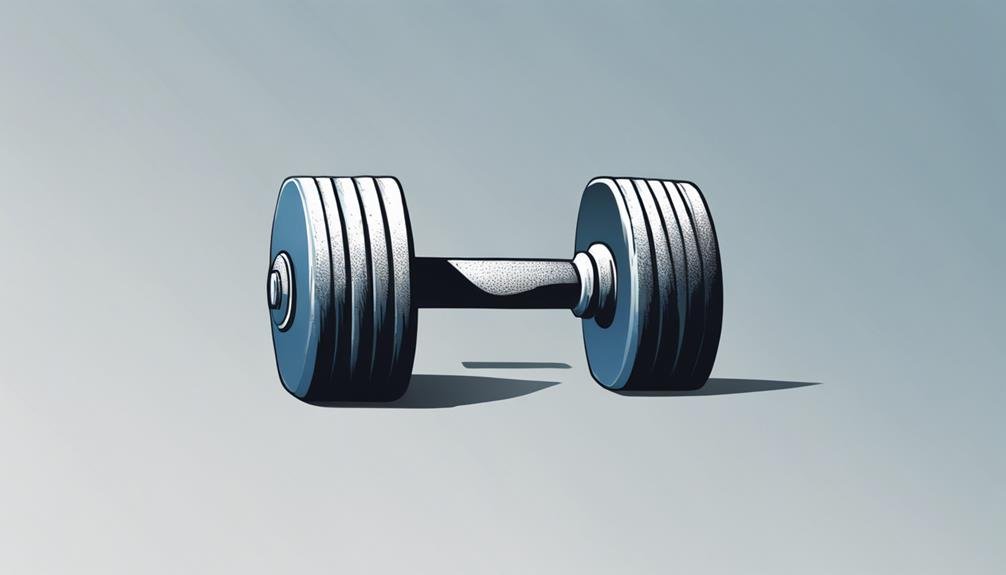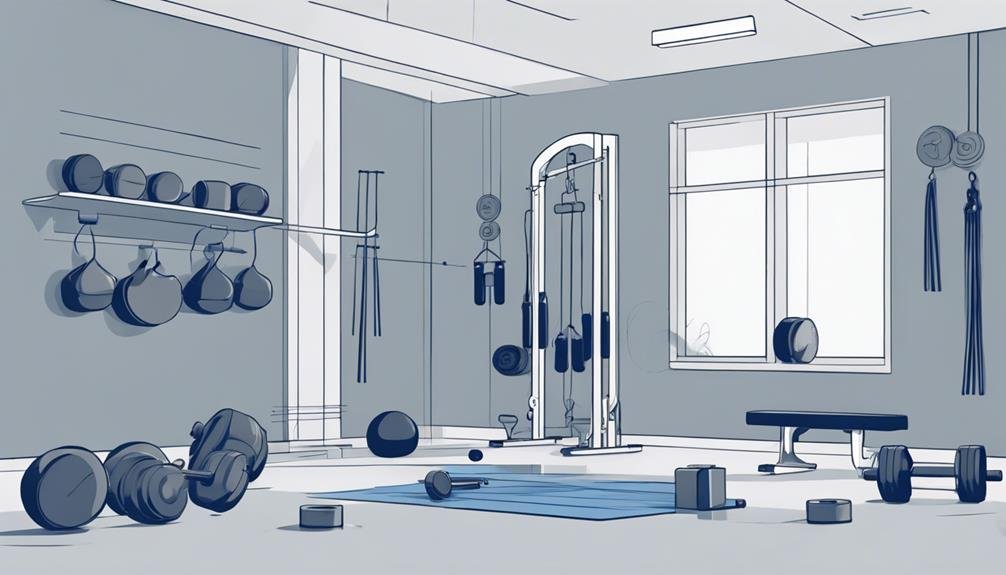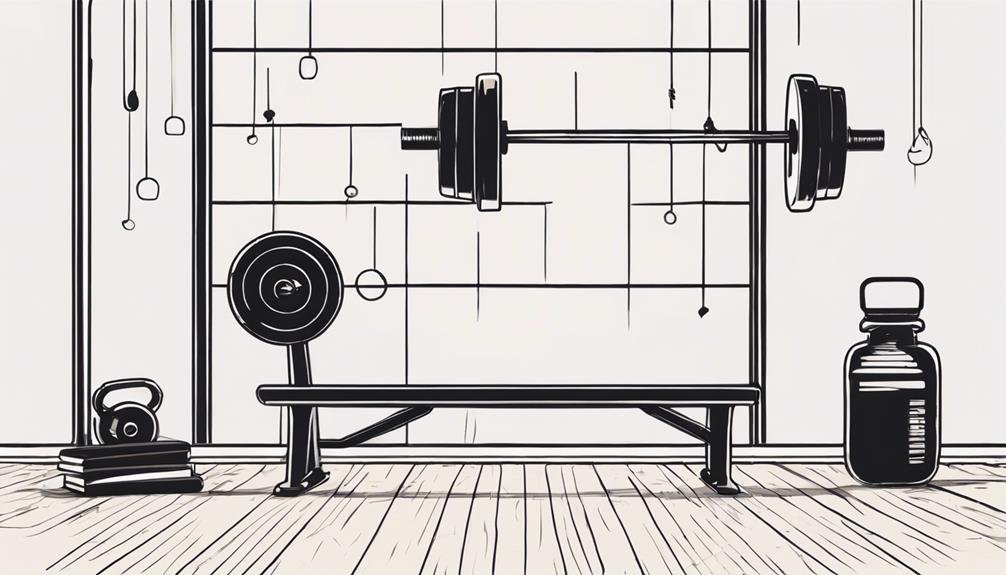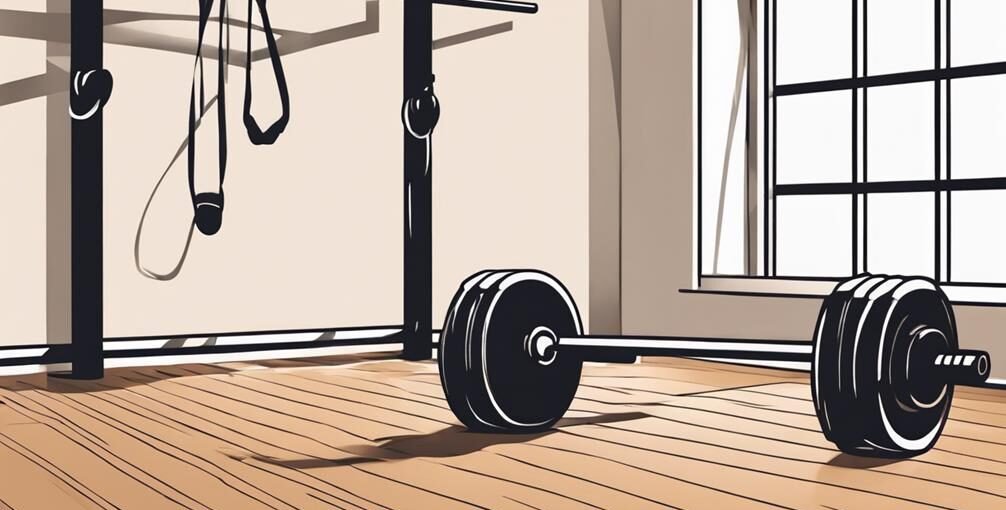Progressive Overload for Men Over 40: Maximizing Results
If you're a man over 40, progressive overload is essential for maximizing your fitness results. Focus on gradually increasing the weights you lift by 5-10% every few weeks. Incorporate compound exercises like squats and deadlifts to build strength and muscle mass effectively. Don't forget to track your workouts to monitor progress and keep motivation high. Prioritize recovery by getting enough sleep and staying hydrated. Remember, setting smaller, achievable goals can help maintain your motivation and prevent injuries. There's much more you can explore to tailor your approach and see great results.
Key Takeaways
- Gradually increase weights by 5-10% every few weeks to promote continuous muscle growth and strength gains.
- Focus on compound movements like squats and deadlifts for maximum muscle engagement and efficiency.
- Adjust repetitions and sets regularly to vary workout intensity and challenge your muscles further.
- Monitor progress by tracking weights, reps, and body measurements to motivate and guide adjustments.
Understanding Progressive Overload
Progressive overload is the key principle that helps you consistently build strength and muscle as you age. It involves gradually increasing the demands you place on your muscles during workouts. You can achieve this by lifting heavier weights, increasing repetitions, or minimizing rest time between sets.
It's crucial to challenge your body to adapt and grow stronger; otherwise, you might plateau or even regress.
Start by evaluating your current fitness level and set realistic, incremental goals. Track your progress meticulously, so you know when it's time to up the intensity.
Benefits for Men Over 40

Embracing progressive overload can greatly enhance strength, muscle mass, and overall fitness for men over 40, helping you stay active and vibrant as you age.
As you challenge your muscles consistently, you'll notice improvements in your endurance and energy levels, making everyday tasks easier. This approach not only helps in building muscle but also boosts your metabolism, aiding in weight management.
You'll likely experience better joint health and increased bone density, reducing the risk of injury as you grow older.
Furthermore, the mental benefits, such as improved confidence and mood, can't be overlooked.
Key Techniques to Implement
To maximize the benefits of progressive overload, incorporate specific techniques that can help you effectively increase your strength and muscle mass.
Start by gradually increasing the weight you lift—aim for a 5-10% increase every few weeks.
Focus on compound movements like squats and deadlifts to engage multiple muscle groups.
You can also adjust your repetitions and sets; for instance, try performing more reps with lighter weights, or fewer reps with heavier weights.
Implementing tempo changes in your lifts, such as slowing down your eccentric phase, can further challenge your muscles.
Finally, verify you're tracking your progress consistently to stay motivated and make informed adjustments.
These techniques will set you on the path to achieving your fitness goals effectively.
Designing Your Workout Plan

When designing your workout plan, it's crucial to prioritize exercises that align with your fitness goals and accommodate your body's needs. Start by incorporating a mix of strength training, cardiovascular, and flexibility exercises. This balanced approach will enhance your overall fitness.
Here's a simple structure to reflect on:
| Exercise Type | Frequency |
|---|---|
| Strength Training | 2-3 times/week |
| Cardiovascular | 2-3 times/week |
| Flexibility | Daily |
| High-Intensity Interval Training | 1-2 times/week |
| Active Recovery | 1-2 times/week |
Monitoring Your Progress
Monitoring your progress is essential for guaranteeing your workout plan is effective and helps you reach your fitness goals.
Keep track of your workouts by recording weights, reps, and sets. This data allows you to see improvements over time and identify areas where you need to increase intensity.
Regularly assess your performance, whether through monthly fitness tests or tracking body measurements. Consider using apps or journals for easy documentation.
Additionally, pay attention to how you feel during and after workouts; fatigue and soreness can signal when to adjust your routine.
Celebrate your milestones, no matter how small, as they'll keep you motivated.
Consistent monitoring will help you stay accountable and guarantee you're on the right path toward achieving your goals.
Common Challenges and Solutions

As you track your progress, you may encounter various challenges that can hinder your fitness journey, especially as you age.
One common issue is recovery time; you might find that you need longer to bounce back from workouts. To combat this, prioritize sleep and hydration, and consider incorporating active recovery days.
Another challenge is motivation; it can wane when you don't see immediate results. Setting smaller, achievable goals can help keep you engaged.
Lastly, injuries may arise more frequently. To reduce this risk, focus on proper form and listen to your body. If something feels off, don't hesitate to adjust your routine.
Embracing these solutions will help you navigate hurdles and stay on track with your progressive overload journey.
Questions
Can I Combine Progressive Overload With Other Training Methods?
Absolutely, you can combine progressive overload with other training methods. Mixing in interval training, circuit workouts, or different strength techniques can enhance your results and keep your routine exciting while promoting overall fitness improvements.
How Often Should I Change My Workout Routine?
You can stick to a routine for weeks, enjoying consistency, or switch it up every four to six weeks, sparking excitement. Both approaches work; just listen to your body and adapt based on your progress.
What Equipment Do I Need for Effective Progressive Overload?
To achieve effective progressive overload, you'll need basic equipment like dumbbells, resistance bands, a barbell, and a bench. These tools help you gradually increase resistance, ensuring your workouts remain challenging and effective over time.
Are There Any Dietary Considerations While Implementing Progressive Overload?
Think of your body as a garden; to flourish, it needs the right nutrients. While implementing progressive overload, focus on balanced meals rich in protein, healthy fats, and carbohydrates to fuel your progress and recovery effectively.
How Can I Prevent Injuries While Increasing Weights?
To prevent injuries while increasing weights, focus on proper form, warm up adequately, and listen to your body. Gradually raise weights, ensuring you're comfortable with each level before pushing further. Recovery's just as essential!
Conclusion
Incorporating progressive overload into your routine can transform your workout experience, especially after 40.
You might find it surprising how small adjustments yield significant results.
As you embrace this approach, you'll discover newfound strength and energy, making every session count.
Remember, it's not just about lifting heavier but also about enjoying the journey.
So, why not start today?
You could be just one workout away from breaking through your limits and achieving your fitness goals!

